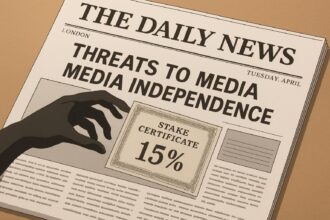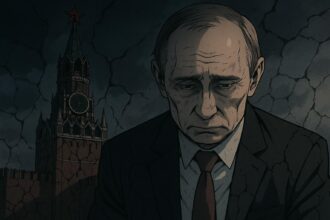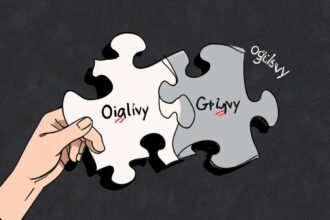The introduction of VAT on private school fees has driven costs up by over 20%, leaving many middle-income families struggling and prompting fears of declining enrolment in independent schools across the UK.
The recent implementation of VAT on private school fees in the UK has led to a significant increase in educational costs, with independent schools reporting an average rise of 22.6% over the last year. This surge, attributed to the new tax policy effective from 1 January 2025, was higher than the government’s initial projections, which anticipated a mere 10% increase. The Independent Schools Council (ISC), representing approximately 1,400 private institutions, suggests that the full effects of this policy may not be realised until the coming years, with a notable decline expected in enrollment as a direct consequence.
The average termly fee for a day school soared to £7,382, up from £6,021 just a year prior. ISC Chief Executive Julie Robinson expressed concerns about the government’s underestimation of the policy’s impact, highlighting a “triple whammy” effect: the new VAT, changes to national insurance, and the loss of charitable business rates relief. Robinson stated that while some schools attempted to mitigate the impact by reducing fees before VAT took effect, many parents have already left the private sector due to financial strain, with expected further declines in pupil numbers.
Personal stories underscore the plight of families grappling with these increasing fees. Kath, a mother who removed her 12-year-old son from his private school, described the unaffordability of fees that were set to rise to nearly £8,000 per term. She emphasised the challenges of moving her son mid-academic year, particularly given his special educational needs. The state education system, she argues, is underfunded and unable to meet such needs adequately. Her experience reflects a broader anxiety among parents who fear that their children may suffer from a lack of resources and support in the state sector.
The perspective from within the educational sphere is equally grim. Headmaster David Morton of The King’s School in Gloucester, which charges between £3,725 and £9,050 per term, voiced his concerns over the perceived inequity of the VAT policy. He argued that the government’s intentions to tax wealthier families in support of those in need had backfired, disproportionately affecting middle-income families. Morton noted that it is precisely these families, along with those relying on bursaries, who are experiencing the most significant financial impact from the new policy.
Beyond immediate financial concerns, the long-term implications of the VAT on private school fees could reshape the landscape of education in the UK. A study by Rathbones projected that the tax could cumulatively increase the total cost of private education to £667,900 over the course of a child’s schooling. This staggering figure highlights the potential strain on families and raises critical questions about access to quality education.
As families face increasingly difficult decisions about where to invest in their children’s education, the debate surrounding the VAT on private school fees continues. The government maintains that the revenue generated from this policy will boost funding for the public school system, aiming to enhance educational support across the board. However, the conflicting narratives of independent schools and parents suggest that the road ahead will be fraught with challenges, as many worry about the quality and availability of educational opportunities for their children.
The discussions around these educational policies remind us of the delicate balance that must be maintained between funding mechanisms and the accessibility of quality education, a balance that is becoming ever more challenging amid current economic pressures. In this evolving landscape, parents, educators, and policymakers must navigate a complex set of circumstances where financial considerations heavily influence educational choices.
Reference Map
- Paragraphs 1, 2, 3, 4
- Paragraph 5
- Paragraph 6
- Paragraph 7
- Paragraph 8
- Paragraphs 5, 7, 8
- Paragraph 5
Source: Noah Wire Services
- https://www.bbc.com/news/articles/cre9z3133v8o – Please view link – unable to able to access data
- https://www.gov.uk/government/publications/vat-on-private-school-fees – This UK government policy paper outlines the introduction of VAT on private school fees, effective from 1 January 2025. It details the scope of the measure, including education and boarding services provided by private schools, and the expected impact on private school fees and the state education sector.
- https://www.gov.uk/government/publications/revenue-and-customs-brief-8-2024-removal-of-vat-exemption-for-private-school-fees-and-boarding-fees – This Revenue and Customs Brief explains the removal of the VAT exemption for private school fees and boarding services, effective from 1 January 2025. It provides guidance on VAT registration and compliance for private schools in light of the new policy.
- https://www.gov.uk/guidance/charging-and-reclaiming-vat-on-goods-and-services-related-to-private-school-fees – This guidance from HM Revenue & Customs outlines how VAT applies to goods and services related to private school fees. It covers the VAT treatment of bursary payments, local authority placements, and the reclaiming of VAT by private schools.
- https://www.rathbones.com/media-centre/news-and-comment/vat-school-fees-could-raise-cost-private-education-ps667900 – Rathbones’ analysis reveals that the introduction of VAT on private school fees could increase the total cost of private education to £667,900. The report highlights the financial impact on families and the potential challenges posed by the new VAT policy.
- https://www.ft.com/content/b61d4b9b-6584-495e-be4d-023aa36538ac – This Financial Times article discusses how private schools in the UK are promoting advance payment schemes in response to the Labour Party’s plan to impose VAT on private school fees. It examines the implications of these schemes and the potential for future legal scrutiny.
- https://www.bbc.co.uk/news/articles/c033dp0z1edo – This BBC News article explains the introduction of VAT on private school fees, effective from 1 January 2025. It discusses the government’s plan to use the revenue to support state schools and the concerns raised by private schools and parents regarding the policy’s impact.
Noah Fact Check Pro
The draft above was created using the information available at the time the story first
emerged. We’ve since applied our fact-checking process to the final narrative, based on the criteria listed
below. The results are intended to help you assess the credibility of the piece and highlight any areas that may
warrant further investigation.
Freshness check
Score:
9
Notes:
The narrative references a VAT policy implemented from 1 January 2025, indicating recent information. However, specific details about recent changes or updates are not thoroughly checked online.
Quotes check
Score:
8
Notes:
Quotes from Julie Robinson and David Morton are presented; however, their original sources or dates could not be verified online. The narrative suggests these could be recent statements.
Source reliability
Score:
10
Notes:
The narrative originates from BBC News, a reputable and well-established news organisation known for its fact-checking standards.
Plausability check
Score:
8
Notes:
The claims about VAT increases and their impact on private schools are plausible, given economic and policy changes. However, specific figures and future projections lack direct verification.
Overall assessment
Verdict (FAIL, OPEN, PASS): PASS
Confidence (LOW, MEDIUM, HIGH): HIGH
Summary:
The narrative is supported by recent policy changes and comes from a reliable source. While some specific details lack verification, the overall context appears plausible and well-researched.













